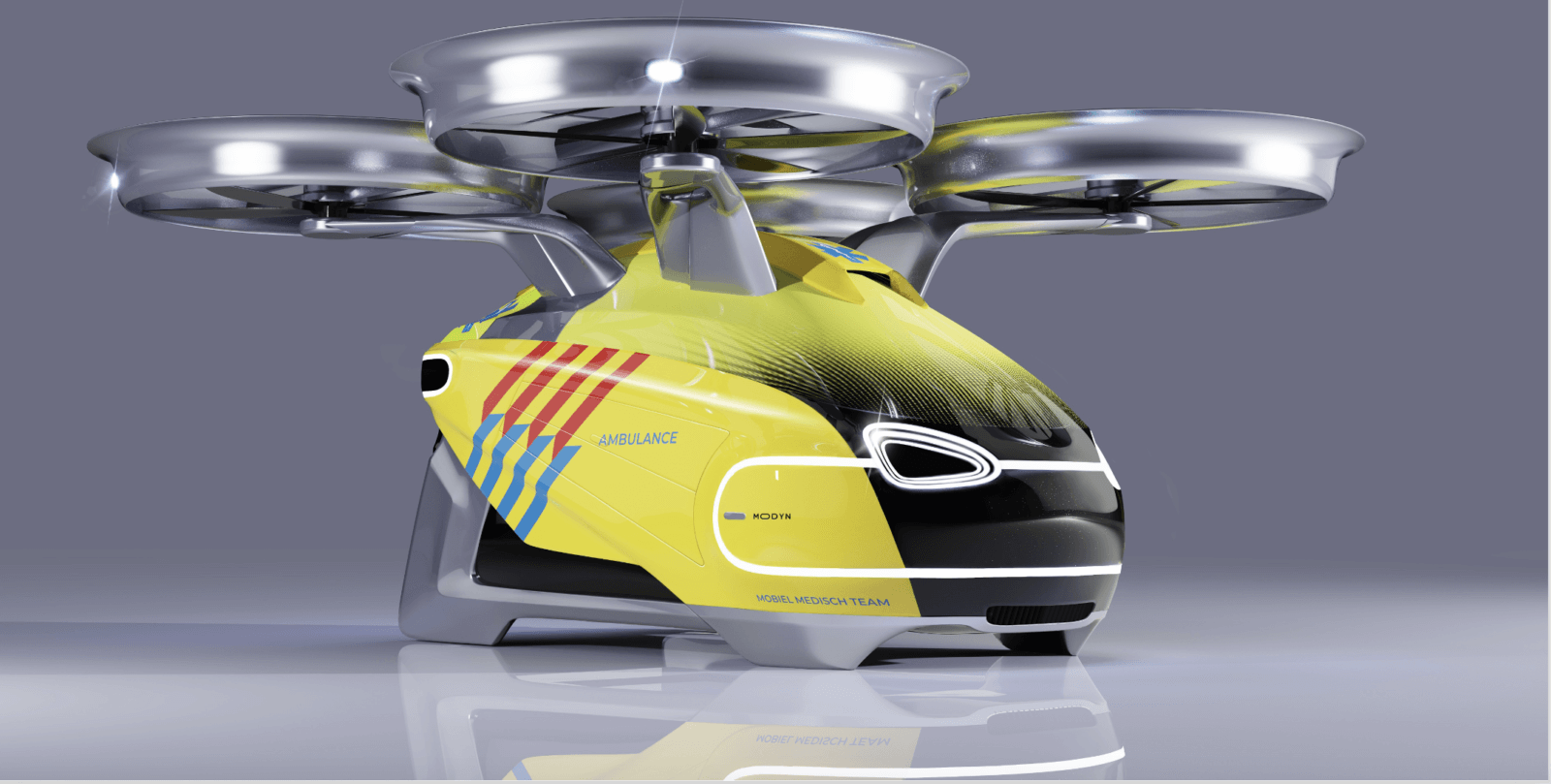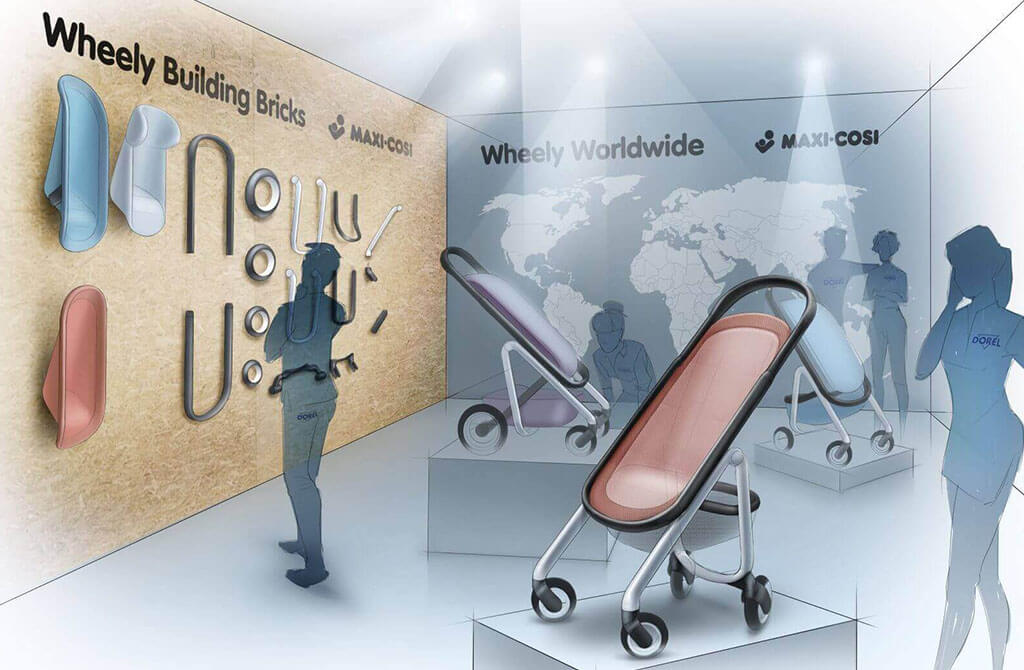Our ambulance drone concept
Last month we revealed our ambulance drone concept; a look into the (near) future of how this new emergency vehicle can better serve patients and responders, reduce response times and provide more reliability compared to the helicopters used today.
Our student, Jasper Dielemans, who presented this as his Master’s thesis, helped us flesh out a lot of details, and contributed to the awesome research done with local hospitals and first responders to uncover how we could design a better product.
But, this concept has been a long time in the making. So when we got a lot of great responses to the concept, we knew we wanted to share more about the idea. Sitting down with our managing director Gert-Jan van Breugel, we discussed the ideas behind the concept, how the ambulance drone can impact society, and how he thinks MODYN can put an important stamp on the world of mobility.

So where did this idea come from? What made you and the rest of the MODYN team decide to explore this concept?
“To answer that, we have to take a step back. In the mobility world, we’re on the brink of a new mobility layer in our cities and society—air mobility. This drone technology is capable of achieving what the train did in connecting cities and allowing people to move faster and more freely. Naturally, our team wanted to be part of that conversation and help shape the future. The bigger part of the conversation on drone mobility has been about personal and public transport. It’s interesting that MODYN wanted to contribute with something as niche as an ambulance drone.
It’s notable that the bigger part of this conversation of drone mobility has been about personal and public mobility, so it’s interesting MODYN wanted to contribute to that with something as seemingly niche as an ambulance drone.
“We looked at the use case for drone mobility and wanted to design something widely accepted by the public. Public acceptance is one of the biggest challenges with drone mobility. With the ambulance drone, we saw a great opportunity to design something that would gain public support. We wanted to show people how design and innovation could transform something for the better. This concept shows the clear benefits and makes a strong case for it.

So tell us how your design will win over the public
“Here in the Netherlands, we have just four emergency helicopters for the entire country. Each covers a huge area, creating a difficult situation. These helicopters were originally designed for military use and adapted as ambulance vehicles. They require a lot of maintenance, aren’t eco-friendly, need two pilots, and are loud. There are many drawbacks.
With our ambulance drone, we tried to solve all of these problems. A big part of our process involved talking to pilots, emergency medical technicians, hospitals, and stakeholders. This is part of our trademark ‘digging’ phase. It’s crucial to understand the people we’re designing for and the problems we’re solving. In the end, I think we’ve created a better solution dedicated to saving lives.
The interior is designed specifically for emergency responders. It considers the flow and space, and the placement of tools, machines, and storage spaces. Even how the patient is transported in and out of the vehicle was carefully thought out. Our work with 3D designs in Virtual Reality really helped. Using this technology, we could walk around the outside of the ambulance drone, inspect the interior, and look inside the cockpit. This VR technology helped us design a better product.”

How do you see the ambulance drone transforming emergency care? The concept is for 2035 – but are we closer than that??
“Yes, definitely. We’ve had a lot of interest in our ambulance drone from the public and industry, and we’re really excited about the discourse around it. Our goal with this ambulance drone is to really offer the public a better, safer option, but to also do so in a way that democratizes the technology so that it’s widely available.
I’d also like to think that this ambulance drone is a real stepping stone to bigger integration of drone vehicles in society. You know, once people get used to seeing it in use and for such an important task, I think the concept will become much more trusted, allowing this to become part of our everyday lives sooner than you may think.”
For more of Gert-Jan’s takes on mobility, the future and design, be sure to give him a follow on LinkedIn.


